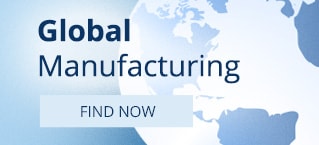Home > Tech Tools > Technical Papers
Capacitor Discharge Current Theory
This paper is a detailed explanation of how the current waveform behaves when a capacitor is discharged through a resistor and an inductor creating a series RLC circuit. There are several natural response cases that can occur depending on the values of the parameters in the circuit such as overdamped, underdamped and critically damped response. What this paper will focus on is a way of determining the peak discharge current achieved in the circuit. Traditionally we believe that we can use Ohm’s Law to find the peak current but this is not true in every case.
Click Here to Open a PDF version of the Technical Paper: Capacitor Discharge Current TheoryDry Film Capacitors for High-Frequency Power Electronics
This article discusses the requirements for power capacitors in systems seeking advantage in state-of-the-art high-frequency designs. Comparison of system design versus capacitor design approaches highlight the advantages of each approach discussed. Electronic Concepts’ power capacitors designed specifically to meet the challenges of increasing switching and harmonic filtering are presented.
ECI High Temperature Film Capacitors
This presentation is an overview of ECI dielectric research and industry available dielectrics.
Click Here to Open a PDF version of the Technical Paper: ECI High Temperature Film Capacitors
AC Film Capacitors for Inverter Output Filters
This presentation discusses AC filter capacitors used in inverter outputs. Notably the presentation concentrates on the use of metallized polypropylene capacitors of dry construction.
Power Film Capacitors for DC Bus Applications
This presentation explores the state-of-the-art in metallized dielectric DC link capacitors. The discussion is based on dry constructions. The present industry demands are discussed, system level approaches for discrete versus modular capacitors, factors affecting capacitor design, and future development trends. Metallized polypropylene is discussed as the premier power film and how the film has reached its potential.
The Affects of Capacitor Geometries
To understand the effects of geometry on finished capacitor functions it is first important to understand the section geometry (basic winding unencapsulated). In general, the shorter the section is the better it will function. The ideal capacitor would generally have the apparent diameter to length ratio of a hockey puck. The more end area there is, the more peak current the unit can handle.
Click Here to Open a PDF version of the Technical Paper: The Affects Capacitor Geometries
A New Mitigation Strategy for Failures in Metallized Polypropylene Capacitors
Metallized film capacitors utilizing polypropylene dielectric have become the component of choice in critical applications because of their low dielectric loss and superior breakdown voltage strength. There are some concerns that in certain applications metallized polypropylene capacitors can fail in a manner such that the failure poses a hazard to the equipment and personnel. FuseacTM is a thermal fuse technology designed to protect against common capacitor failure modes in high power AC and DC applications.
A Low-Inductance DC Bus Capacitor for High Power Traction Motor Drive Inverters
For a battery-powered traction motor drive, the inverter dc bus presents high-frequency pulsating current due to device switching. Conventional inverter design sizing dc-bus capacitor based on voltage ripple is no-longer effective. In order to handle high current in high temperature environment, a lowinductance high-current film capacitor is proposed to replace the conventional electrolytic bulk capacitors for a 75-kW traction motor drive inverter.
Current Ratings and Dissipated Power in DC and AC Applications
Capacitor specifications vary between manufacturers and it can be difficult for a design engineering selecting a capacitor to interpret the information presented in literature for use in the actual application. This application note discusses how to manipulate published capacitor ratings to the actual system requirements and determine if the capacitor will function reliably for that application.
Selecting Film Bus Link Capacitors For High Performance Inverter Applications
For years design engineers have chosen electrolytic capacitor technology for use as the bus link capacitor on inverter designs. The main attraction has always been the low cost per farad associated with electrolytic capacitors. This paper presents a practical mathematical approach on how to properly size a bus link capacitor for a high performance hard switched DC to AC inverter using film capacitors and will show how film capacitors are advantageous over electrolytic capacitors in terms of size, weight, lifetime, inverter efficiency and cost.
The Self-Healing Affect of Metallized Capacitors
Metallized capacitors offer the advantages of volume efficiency and self-healing. Self-healing is the ability of a metallized capacitor to clear a fault area where a momentary short occurs due to dielectric breakdown under voltage. The conditions that lead to a fault vary.
Explanation of Life Projection and F.I.T. Calculations
The calculations for the life projections supplied are based on the work of John D. Moynihan as described in “Selection and Application of Capacitors”, Second Edition, Copyright 1987 by Components Technology Institute Inc. There are two equations that apply to life projection. The first is the Voltage Power Law (for constant temperature) and the second is the Temperature Rule (for constant voltage).


